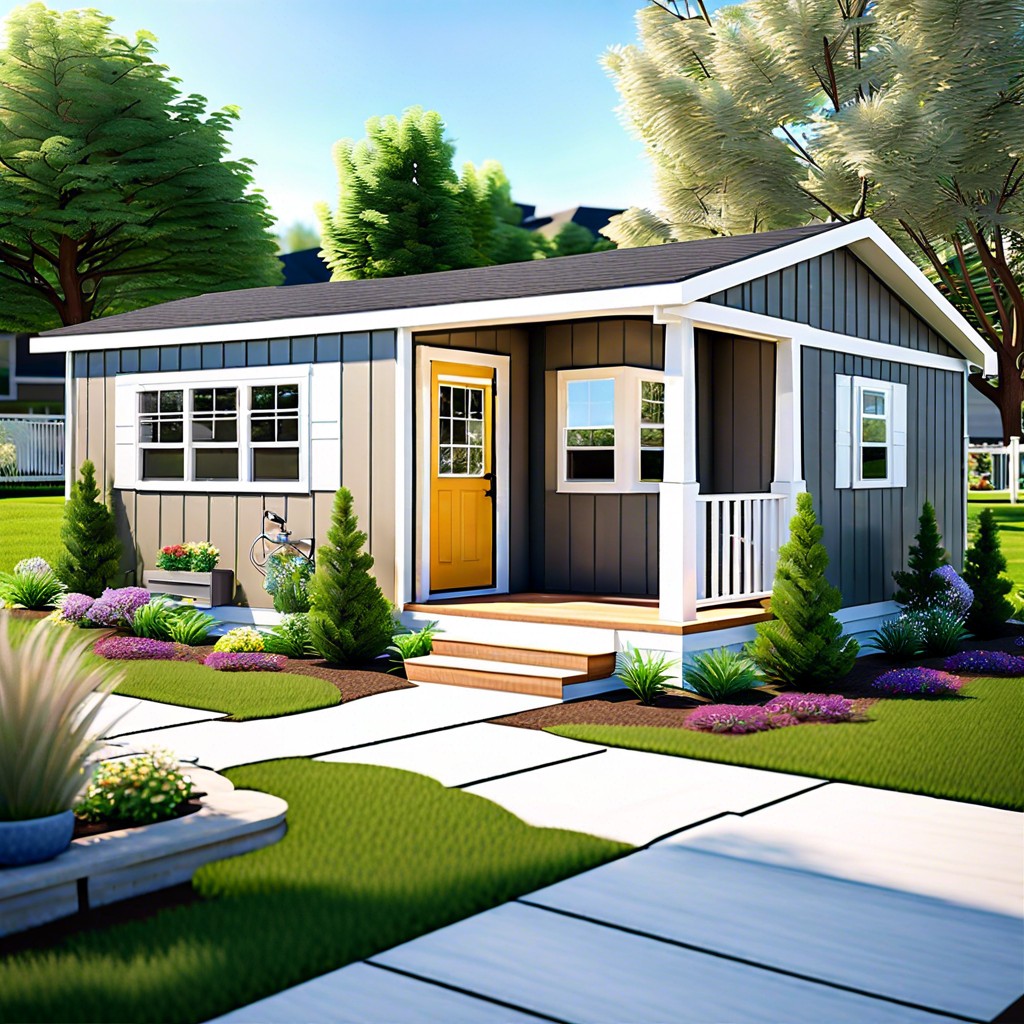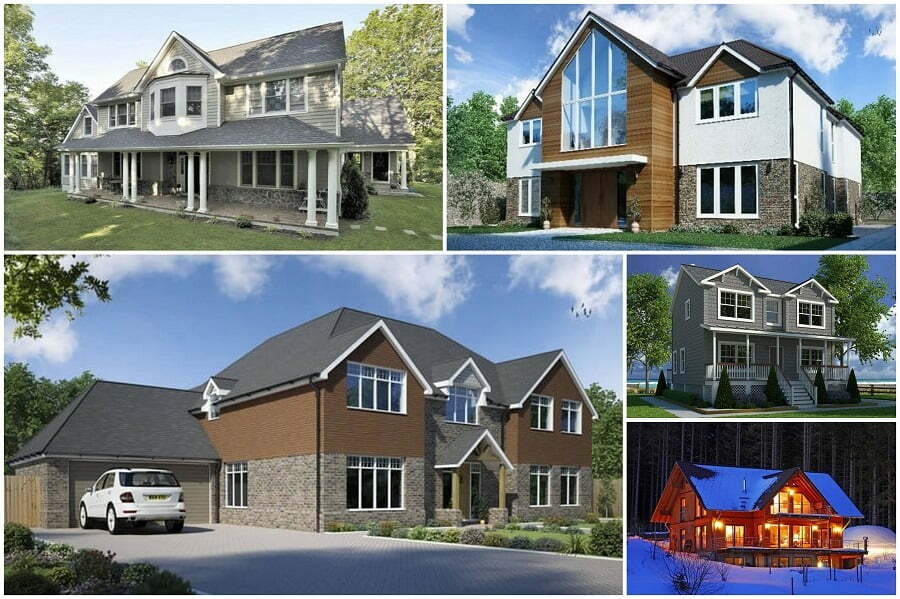Last updated on
Yes, a manufactured home can serve as an accessory dwelling unit (ADU) if it meets local zoning and building regulations.
Key takeaways:
- A manufactured home can be an ADU if it meets local regulations.
- Size, appearance, utilities, and permits are important considerations.
- Zoning laws and ordinances dictate ADU requirements for manufactured homes.
- Building codes must be followed for safe and standardized construction.
- Prefab ADUs are generally cheaper than stick-built ADUs.
Understanding ADU Definitions and Requirements

Accessory Dwelling Units, ADUs for short, are essentially secondary housing options on a single residential lot. Sometimes called “granny flats” or “in-law suites,” these spaces can provide a cozy and independent living area separate from the main dwelling.
Before you can hitch a manufactured home to your property and call it an ADU, there are specific boxes you need to tick. First, size matters. ADUs are usually subject to maximum size requirements, which vary by location. Generally, they can’t be too large, lest they overshadow the primary residence.
Next, keep in mind that the manufactured home must adhere to the same aesthetic vibe as the primary house. Sure, it doesn’t need to be a carbon copy, but it should blend with the neighborhood’s look and feel. Think of it like arriving at a costume party—you don’t want your ADU to stand out for the wrong reasons!
Also, utilities are a key point. Most jurisdictions require ADUs to have independent or shared utility connections. This means planning for water, power, and sewage must be carefully considered.
Lastly, buckle up for some red tape. You’ll need the right permits to move forward, and these can vary widely from one place to another. It’s a little like a game of Monopoly—make sure you have the necessary “Get Out of Jail Free” cards in the form of permits before you make your move.
Remember, while the rules can seem like a hurdle, they’re there to maintain harmony in the community and protect property values. Keep these points in your toolkit, and you’ll be well on your way to crafting a spot-on manufactured home ADU.
Examining Zoning Laws and ADU Ordinances for Manufactured Homes
Peeling back the layers of local zoning bylaws will often feel like navigating a labyrinth, yet it’s pivotal for your ADU journey. Cities and counties have their own set of rules determining if your manufactured home can share the backyard with your primary residence. Here’s a fast-track guide to what you need to eyeball:
First off, size matters. There’s usually a cap on the dimensions of your ADU—think of it like a game of real-life Tetris where you need your manufactured home to fit into a designated space. You can’t squeeze an elephant into a Mini Cooper, right?
Say cheese! Appearance counts, too. Some neighborhoods insist that your ADU mirrors the look of your main house. This might not be the red carpet, but ensuring your manufactured home isn’t a fashion faux pas in your backyard is key.
Heads up on the utilities hook-up! Often, you’ll be required to connect your ADU to existing water, sewer, and electric services. Think of it like setting up a new smartphone – without the right connections, it’s not much more than a shiny paperweight.
Lastly, don’t play hide and seek with parking. Additional living space often means additional parking requirements. You wouldn’t want your car to feel left out in the cold, would you?
Diving into these details may seem dry, but hey, knowing is half the battle. Just remember, every city dances to its own beat, and syncing your ADU plans to that rhythm is the move to master.
Navigating Building Codes for Manufactured Home ADUs
Diving straight into building codes, think of them as the rulebook that keeps construction practices safe, sound, and standardized. For a manufactured home to be considered an accessory dwelling unit (ADU), it has to play by these rules too.
First, it’s pivotal that your manufactured home complies with HUD’s federal building codes—particularly the HUD Code for Manufactured Housing. Unlike traditional homes that follow local building codes, manufactured homes need that HUD stamp of approval for structural, heating, plumbing, and electrical systems.
Moreover, it’s crucial to align your project with specific state and local codes. Some areas stipulate foundation requirements, demand energy-efficiency measures, or set standards for tie-downs to protect against wind damage. Your manufactured ADU must gel with these guidelines.
Now, don’t forget to peek at the aesthetic rules. Communities may have their say on design, dictating roof pitches, materials, or colors to keep the neighborhood’s charm intact. Compliance here ensures your ADU is not just safe and sturdy but also a delightful addition to its surroundings.
Keeping these code considerations in sight steers your ADU project in the right direction. It’s akin to following a recipe—skip a step, and your gourmet dish might end up just half-baked. Accessories make the outfit, and in the case of ADUs, adhering to building codes is the accessory that completes the housing ensemble.
Cost Comparison: Prefab ADUs Vs Stick-Built ADUs
Prefab ADUs, also known as modular ADUs, arrive at your property almost ready to inhabit. They typically cost less than stick-built ADUs largely due to the efficiency of factory production. The assembly line method shrinks labor costs and minimizes material waste.
On the flip side, stick-built — or traditional onsite-built — ADUs can be pricier. Why the heftier price tag? Well, you’re paying for skilled tradespeople who construct your ADU piece by piece. It’s a slower process, subject to weather delays, and occasionally, some materials might go to waste. Think of it like ordering a tailor-fit suit compared to off-the-rack.
However, don’t get caught out thinking prefab means one-size-fits-all. Today’s market offers a variety of styles and customizations, from charming bungalows to sleek, modern designs. It’s a myth that prefab equals cookie-cutter.
Remember, too, that while the base price of a prefab might be lower, transportation and craning the unit onto your site can add to the overall expense. And don’t skip the groundwork; both types require a solid foundation, which also factors into your budget.
Weighing the pros and cons of each is like balancing your checkbook. Consider short-term outlay against long-term benefits. Might scrimping now lead to more maintenance later? Could that extra investment upfront save you headaches down the road? A penny for your thoughts.
Financing Options for Manufactured Home ADU Projects
Securing funding for an ADU project might have you scratching your head, but don’t fret. There’s light at the end of the tunnel with several options at your fingertips. Traditional home equity loans are a go-to, leveraging the value of your primary residence to reel in that extra cash.
If saving pennies for a rainy day isn’t quite your style, personal loans can be a magic bullet. They are quicker to procure but come with a caution sign for higher interest rates. Shop around, and you might find a gem.
Now, for the green-thumbed among us, there’s the eco-friendly route. Green loans often offer favorable terms for energy-efficient manufactured homes. If your ADU has a smaller carbon footprint, your wallet might just thank you for it.
Veterans, wave your flags because VA loans have entered the chat. If you’ve served, special loan programs can help transform your ADU dreams into reality with potentially better rates and terms.
Last but won’t be left on the shelf, check with local initiatives that sometimes offer incentives or financing aid for ADU construction. It’s like finding a hidden level in a video game — with persistence, you hit the jackpot. Keep your ears to the ground; your community might just have the golden ticket you’re looking for.
Related reading:
Table of Contents





